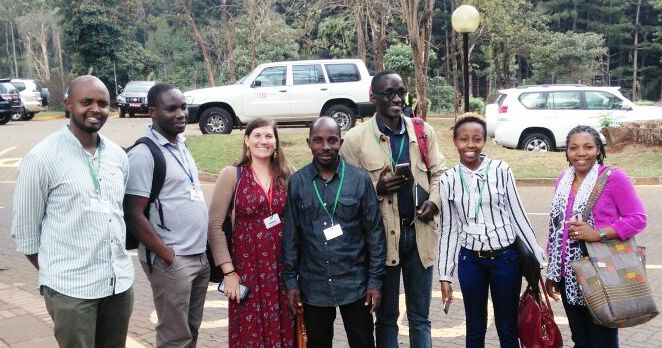
Through its Emerging Issues small grants, the Africa Biodiversity Collaborative Group (ABCG) supports Conservation International’s Vital Signs project on Establishing a Community of Practice to Share Best Practices and Enhance Learning from the Vital Signs Monitoring System and Resilience Atlas in East Africa. Under the Emerging Issues themmatic area, ABCG employs short, targeted interventions to respond to new and rising threats to biodiversity that are likely to shape conservation priorities in the coming years, and influence the overall effectiveness of biodiversity conservation efforts in Africa.
The Vital Signs project held its third community of practice meeting in Nairobi, Kenya from September 12-14, 2018 in order to learn and share best practices and lessons from Conservation International’s Vital Signs Monitoring System. The meeting was attended by project partners from Uganda, Rwanda, Kenya, and Tanzania.
The meeting helped to identify opportunities and entry points for using results from Vital Signs data analysis to inform policy and decision making at the local, national, and regional level.
Potential policy implications identified included:
Forests acting as buffers against malnutrition: These results suggest the need for policies that promote more sustainable access to forests in order to address malnutrition. Integrated policy and planning between the Forestry and Health Departments will be essential.
Female headed household’s access to productive resources and ecosystem services: Women are more enterprising and contribute more to household livelihoods. Because women reinvest 90% of their food and income for the household’s welfare, interventions that target women in the households would have a far-reaching impact. The results suggest a need for specific polices directed towards this.
How natural resources supplement household expenditure on food: Natural resources including food and non-food products, such as medicinal products and building materials, among others, play a role towards meeting household needs. If these benefits are to be maintained, the results suggest a need for policies that promote more investments in community led conservation efforts and landscape restoration.
How benefits from agricultural intensification relate to household income, level of education, and gender: Proxy indicators of Ag-intensification, such as fertilizer and pesticide use, show variations by landscape. Differences between household use of agricultural inputs are attributed to differences in gender and household wealth such as land. The results suggest a need for policies that address the gender gap in particular as it relates to access to land and fertilizer use.
Access and use of extension services: Access to extension services is generally reported to be low, but the results pick up a marked increase in access to extension services in those landscapes engaged in large scale commercial agriculture, with the private sector and non-state actors providing dedicated support. These results underscore the role that private and non-governmental actors play in improving access to extension services and suggest a need for policies to promote these to complement Government efforts, which appear to be overwhelmed by the need.
Read more on the meeting here: http://vitalsigns.org/blog/vital-signs-3rd-community-practice-meeting-held-nairobi


Add a Comment